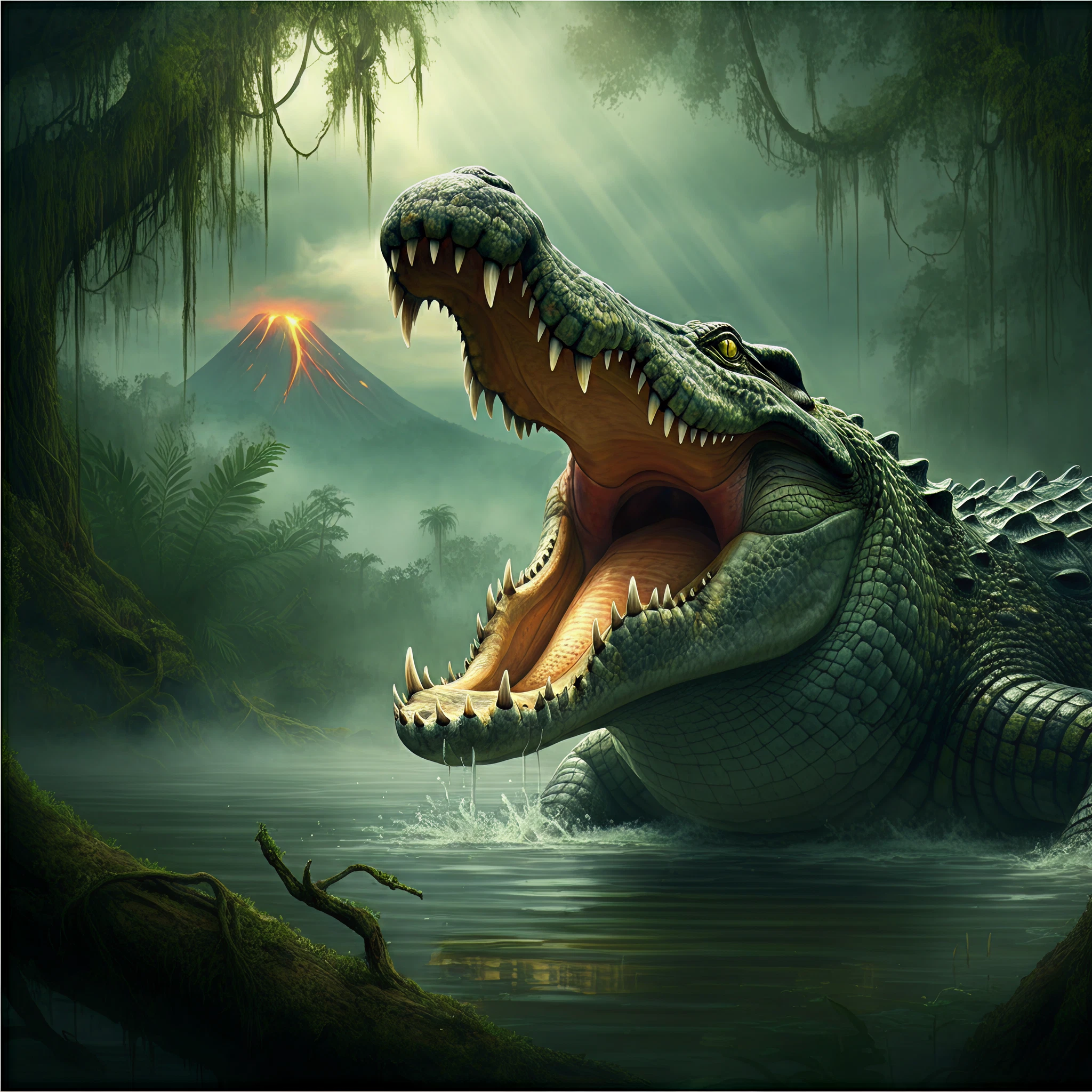Imagine a world where massive predators patrolled ancient waterways, their shadows lurking beneath the surface, waiting to challenge even the most imposing dinosaurs. Meet Deinosuchus, a creature aptly dubbed the “terror crocodile.” This ancient giant dominated waterways in North America approximately 82 million years ago, preying even on dinosaurs. A recent study sheds light on this extraordinary predator’s life, adaptations, and evolutionary significance.
What Was Deinosuchus?
Deinosuchus, meaning “terrible crocodile” in Greek, was a crocodilian species that far surpasses modern alligators and crocodiles in size and ferocity. With an estimated length of over 8 meters (26 feet), its sheer size is comparable to a modern-day bus. To picture its dominance, researchers describe Deinosuchus as one of the largest, most fearsome apex predators of its time.
Preying on Dinosaurs
Unlike present-day crocodilians that mainly target fish, Deinosuchus had an appetite for larger prey. Fossil evidence strongly suggests this predator ambushed smaller dinosaurs that ventured too close to water. Its powerful bite and massive jaws left characteristic bite marks on fossilized bones.
What Set Deinosuchus Apart?
Recent research has revealed several traits that contributed to the success and versatility of this ancient predator.
1. Saltwater Tolerance
Unlike most crocodilians, which are limited to freshwater habitats, Deinosuchus thrived in diverse environments, including saltwater marshes, estuaries, and rivers. Thanks to specialized salt glands, it could survive and hunt in the newly formed Western Interior Seaway, which split ancient North America into two land masses. This adaptability allowed Deinosuchus to roam vast territories teeming with potential prey.
2. Independent Evolution of Giant Crocodilians
The study emphasizes that Deinosuchus wasn’t closely related to modern alligators or crocodiles. Instead, it belonged to an entirely different branch of the crocodilian family tree. The ability to grow to such massive sizes evolved independently multiple times across crocodilian history, reflecting their adaptability to changing global climates and shifting ecosystems.
3. Massive and Specialized Anatomy
Deinosuchus’s skull structure stood out. Its jaws were designed for crushing rather than slashing, allowing it to tackle prey as large as dinosaurs. This predator wasn’t just fast and strategic; it was built for raw power.
What Does This Discovery Mean?
This research helps paleontologists understand how ancient crocodilians adapted to their environments. By studying Deinosuchus, scientists concluded that saltwater tolerance was an early evolutionary trait for crocodilians. However, this feature was lost in some descendants, such as alligatoroids.
Professor Márton Rabi, a senior author of the study, notes, “Deinosuchus’s ability to cross over salty and freshwater regions explains its widespread dominance during a time of significant climatic upheaval.” These insights also suggest how creatures like Deinosuchus thrived during periods of environmental change, offering lessons in adaptability that resonate with modern ecological challenges.
Deinosuchus Fossils and the Bigger Picture
Fossils of Deinosuchus have been unearthed across North America, providing invaluable information about its range and habits. These findings include:
- Fossilized teeth and jawbones displaying the immense crushing strength of the predator.
- Geological evidence confirming its coexistence with the Western Interior Seaway.
- Distinctive bite marks on dinosaur bones, proving its hunting dominance.
The discovery significantly enriches our understanding of the evolutionary history of crocodilians. It highlights that ancient biodiversity was far more dynamic and complex than we previously thought.
Why Is Deinosuchus Important Today?
Deinosuchus is a reminder of how evolution can refine and replicate traits based on environmental needs. Traits like saltwater tolerance highlight how species adapt to survive catastrophic changes, such as rising sea levels and habitat shifts.
Additionally, this discovery adds to our appreciation for ancient ecosystems, reinforcing how apex predators like Deinosuchus played a role in maintaining balance in their environments.
Final Thoughts
The terror crocodile, Deinosuchus, was far more than a prehistoric nightmare; it was a perfectly adapted predator that thrived during one of Earth’s most dynamic periods. Its story reminds us of the complexities of evolution and the importance of biodiversity in shaping the natural world.








